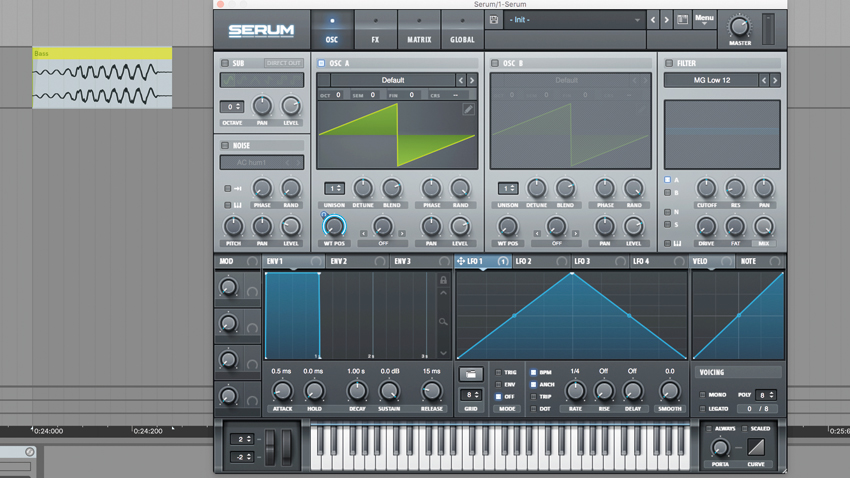How to turn sampled waveforms into wavetables using Xfer Records' Serum
Creating a wavetable oscillator sounds like it should be tricky, but with Xfer’s incredible synth, it’s fun and easy
Most wavetable synths let you import your own wavetables, but making them is usually a major chore. Not so with Serum, though, which gives you all the tools you need to build, interpolate and tidy up your own wavetables right within the instrument itself, based on a variety of sources. Here's how it’s done…
For more wavetable synthesis tips and techniques, pick up the August 2018 edition of Future Music.

Step 1: Xfer Records Serum lets you turn audio samples, internal LFO shapes and even PNG files into wavetable oscillators. We’ll start with an audio sample of a gnarly, modulated bass note. You’ll want to get WT Pos moving with an LFO to automatically sweep through the wavetable position.

Step 2: Click and drag a sample onto Serum’s Osc A display. As you hover over it, several options appear - we’ll drop this sample onto the Import: Constant Framesize (Pitch Avg) option, as our note has one consistent pitch. Serum now resynthesises the audio into the individual frames of a wavetable.

Step 3: Click Osc A’s pencil icon to pop open the Wavetable Editor. Along the bottom, we can see Serum has divided the sample into 17 frames. The frame scanning is currently a bit ‘rough’, but there’s plenty we can do to smooth this out…

Step 4: A wavetable can contain up to 256 frames, so by selecting one of the Morph options, Serum will fill in those extra frames, to smooth the interpolation between them. You can also use other options like Process > X-Fade Edges to smoothen the interpolation.

Step 5: Other useful wavetable editing options are also available. You can normalise the level of all frames for a more consistent level throughout the wavetable, as well as remove flat or silent frames at the beginning and end of the wavetable. Once done, hit Osc A’s disk icon to save your wavetable.
Want all the hottest music and gear news, reviews, deals, features and more, direct to your inbox? Sign up here.

Step 6: We can exaggerate our timbre-scanning movement by using the same modulator to influence complementary parameter changes across the synth - try hooking up your LFO shape to alter oscillator volume, distortion amount, oscillator warp, onboard effects and more.
Future Music is the number one magazine for today's producers. Packed with technique and technology we'll help you make great new music. All-access artist interviews, in-depth gear reviews, essential production tutorials and much more. Every marvellous monthly edition features reliable reviews of the latest and greatest hardware and software technology and techniques, unparalleled advice, in-depth interviews, sensational free samples and so much more to improve the experience and outcome of your music-making.
